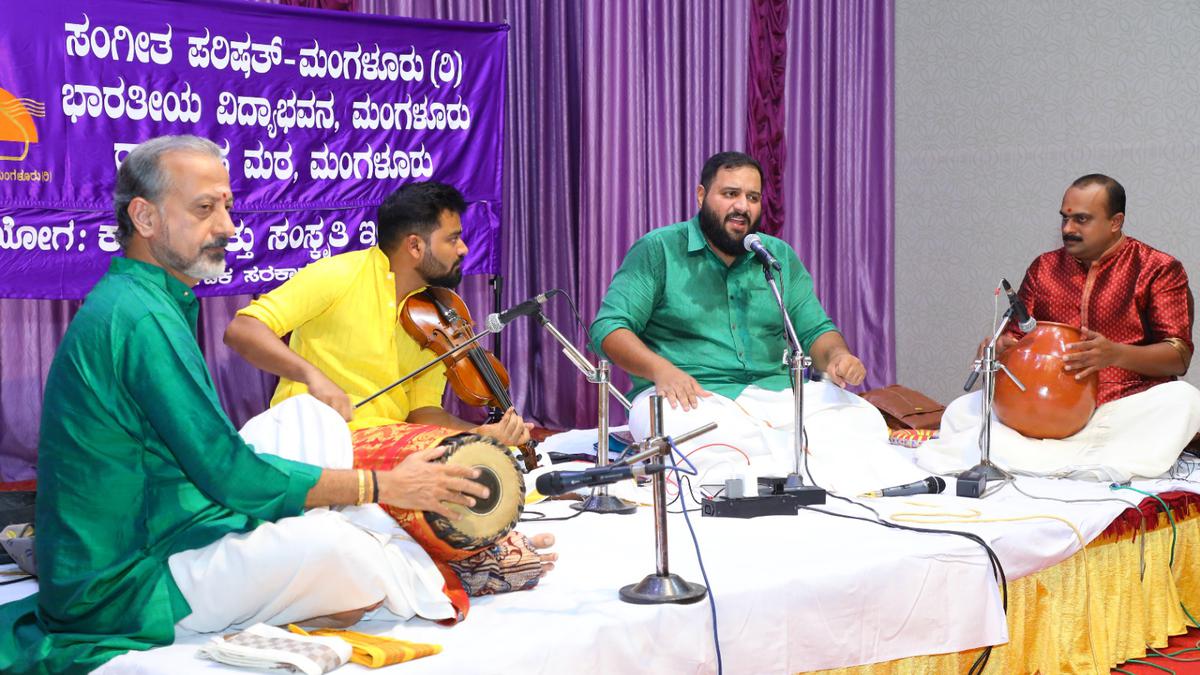
Vignesh Ishwar’s singing was backed by a good voice and style
The Hindu
Vignesh Ishwar performs N. Gopalakrishna Iyer memorial concert
N. Gopalakrishna Iyer, the well-known flautist and music guru from Thirupunithura, started his music school ‘Kalaniketana’ in Mangalore in 1956. Along with his brother Rajan Iyer and Srinivasa Udupa and Sundarachar, he trained innumerable students in Carnatic music. Many of his disciples have done him proud — the most famous of them being the late saxophone maestro Kadri Gopalnath. Gopalakrishna Iyer served Carnatic music until the age of 92 and was duly honoured by the Karnataka Government and other music sabhas.
Mangaluru’s Sangeetha Parishad, Bharathiya Vidya Bhavan and Sri Ramakrishna Mutt, with the support of Karnataka’s Department of Kannada and Culture, has been organising since last year a concert in memory of N. Gopalakrishna Iyer.
This year, Chennai-based Carnatic vocalist Vignesh Ishwar performed. Bestowed with a voice that combines majesty and melody, Vignesh rendered the kritis with appropriate emotion and decorated them with effortlessly flowing swaras.
Vignesh, a student of T.M. Krishna, began his concert with Tyagaraja’s ‘Bhavanutha’ in Mohanam, in which the saint requests Lord Rama to take rest in his heart. Another Tygaraja kriti, ‘Sri Narada Nadasaraseeruha Bringa’ (Narada is described as the honey bee that buzzes around the lotus flower called Naada) in Kanada, followed. The niraval for ‘Vaeda janita vara veena’ was elaborate and full of raga bhava.
A lively thanam in Khamas appeared, and as the audience was savouring that, Vignesh glided into ‘Brochaevarevaruraa’ by Mysore Vasudevachar. Dikshitar’s ‘Soundararaajam aashrayae’ in Brindavana Saranga shone like a bright solitaire, as the pure effulgence of the kriti reigned.
A brisk ‘Sarasa saama daana’, with expected swaraprasthara for ‘Hitavu maatalentho’ was a welcome energiser.
The main piece was in Bhairavi. After the alapana, Vignesh presented Syama Sastri’s ‘Kamakshi, Amba’. The kriti’s beauty was embellished further during the swara session, when he took the first phrase of each charanam for his swaraprasthara, such as ‘Kundaradana’, ‘Kambugala’ and ‘Kumbakucha’.











